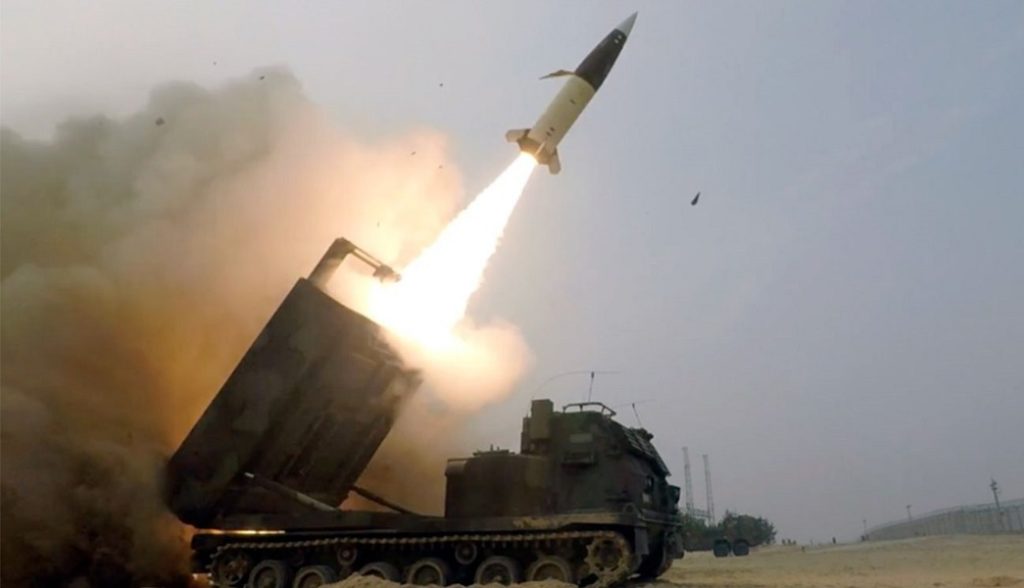For over a year now, Ukraine has been receiving substantial support from many countries around the world.
Foreign equipment continues to assist Ukrainian defenders in these challenging times. However, the Ukrainian Armed Forces (UAF) currently require more powerful tools to expand their capabilities. Ensuring military support for Ukraine is a top priority for Ukrainian diplomacy. The shifts in the positions of various countries regarding assistance to Ukraine are primarily thanks to diplomats. It’s worth noting the personal diplomacy of Ukraine’s President Volodymyr Zelenskyy and, of course, the Ministry of Foreign Affairs and Ukrainian embassies abroad.
ATACMS missiles can significantly alter the situation in favor of the UAF on the front lines. These missiles are needed by Ukraine to have the capability to target command centers, depots, and logistics hubs deep within the Russian defense on temporarily occupied territory because the enemy has moved its command centers, assets, and other targets far beyond the reach of HIMARS missiles. With ATACMS, Ukraine can more effectively target objectives in occupied Crimea without endangering pilots carrying Storm Shadow and Scalp missiles, as they would have to enter the range of enemy air defenses. Ukraine has been in negotiations with the United States for a long time regarding the delivery of these missiles with a range of up to 300 kilometers. Supplying such missiles would mean that potential strike targets could include Russian assets across almost the entirety of Ukraine’s occupied territory, including annexed Crimea.
Combat-ready ATACMS missiles with cluster munitions can indeed have a positive impact on the course of military operations. This is because cluster-equipped ATACMS provides a potent response to the question of what to do with Russian army airfields on Ukrainian territory, from which they deploy attack helicopters and front-line aviation. ATACMS can also create unfavorable conditions for the Russian Black Sea Fleet, as these missiles can target the bays where ships are docked, making the vessels even more vulnerable. In essence, the Russians would have no opportunity to deploy cruise missile carriers in the Black Sea because such a move would entail a risk to the very existence of the ship itself. As of now, Russia lacks missile defense systems capable of intercepting such missiles.
During a meeting with Ukrainian President Volodymyr Zelenskyy in Washington on September 21st, President Joe Biden announced a new package of military assistance to Ukraine worth $325 million, including AIM-9M air defense missiles, Avenger air defense systems, HIMARS rocket artillery ammunition, and 155mm artillery shells. The American President also stated that the United States will provide Ukraine with a small quantity of long-range ballistic missiles, ATACMS, with an extended range to aid in the ongoing Ukrainian counteroffensive. These are missiles capable of striking targets up to 300 kilometers away. Experience shows that the U.S. intentions to provide Ukraine with a small quantity of ATACMS missiles are just the beginning, and we are confident that the volumes can be increased soon.
A positive decision by Washington to provide ATACMS missiles to Ukraine could encourage Germany to make a similar decision. The German government has been discussing the possibility of supplying equally effective Taurus air-launched missiles, a joint production of Germany and Sweden, from Bundeswehr depots since April. Their range extends up to 500 kilometers. Negotiations with representatives of the defense industry continue on this matter, as Chancellor Olaf Scholz wants to make technical modifications to the missiles to exclude strikes by Kyiv on Russian territory, which does not concern the annexed Russian territory of Crimea.
Previously, the United Kingdom and France had already supported the UAF by delivering long-range Storm Shadow and SCALP missiles, and they have not regretted it. The Ukrainian army gained access to Western long-range missiles and used them exclusively for targets within its own occupied territory. Ukraine fully complies with all conditions and does not use Western weaponry to attack Russian territory.
Delaying the delivery of long-range missiles to Ukraine will cost even more lives and only prolong the conflict. Ukraine needs ATACMS and Taurus long-range missiles for the swift conclusion of Russian aggression.

